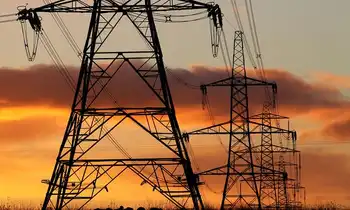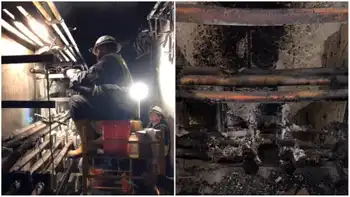Manitoba And Ontario Investigate East-West Grid
Toronto, ON -- - Manitoba and Ontario are taking a major step forward to explore the development of an East-West energy grid and the Conawapa Hydroelectric Project by agreeing to support a feasibility study on the transmission of clean energy from Manitoba to Ontario.
The study is being undertaken by Manitoba Hydro and Hydro One. The announcement was made today by John Baird, Ontario Minister of Energy, and Tim Sale, Manitoba Minister responsible for Manitoba Hydro. "This could be a tremendous opportunity to increase Ontario's supply of clean, reliable and affordable electricity for future generations," said Baird.
"Today's announcement commits us to examining the possibility for the sale and transmission of power from Manitoba to Ontario. I look forward to working with our neighbours to pursue an agreement that benefits the people of both provinces."
"The study is critical to determining the feasibility of a large-scale sale and delivery of hydro-electric power from Manitoba to Ontario," said Sale. "We are confident that the study will provide a sound business case for the establishment of an East-West grid and the development of Conawapa. We look forward to working with our Ontario counterparts on the study." Ontario and Manitoba will officially sign a memorandum of understanding (MOU) committing both jurisdictions to study clean energy transfers from Manitoba to Ontario.
Under the agreement, both Manitoba and Ontario will agree to support work of Manitoba Hydro and Hydro One in evaluating the technical and financial aspects associated with the transmission of clean energy. In addition, both provinces will agree to co-operate on the study of the social and economic aspects of a long-term power supply from Manitoba to Ontario. The Government of Ontario, in the province's 2003 budget, referenced working with Manitoba on power transmission, and today, in the province's Throne speech, announced the agreement to study clean energy transfers.
"There's no question we must look for new sources of clean, affordable electricity and accessing hydroelectric power from Manitoba would have benefits for the public, private industry and the environment," said Baird. "The detailed examination to be undertaken as part of this study will help us to move forward." "Manitoba is fortunate to possess vast and abundant hydroelectric resources," added Sale.
"By enhancing our capacity to transmit green energy through an East-West grid, Manitoba would be in a better position to export our clean energy resource, meet our commitments under the Kyoto Protocol and stimulate economic development for our province." Sale said that the establishment of an East-West grid would be an investment in the future and is an exercise in nation building. "Historically, Canada was built and tied together by the national railroad," said Sale. "The establishment of an East-West grid would strengthen Canada's transmission infrastructure, help to meet the energy requirements of our country, and promote energy security and self-sufficiency."
Both provinces are pleased that the federal government has indicated that it will support the feasibility study. Discussions are ongoing to determine the level of its support. It is anticipated that a final report on the study will be submitted to both Ontario and Manitoba by the end of 2003. If the business case is supportive, the report will identify the steps required to negotiate the necessary power purchase agreement and gain the necessary approvals and financial commitments to carry the generation project forward.
Related News

How Energy Use Has Evolved Throughout U.S. History
WASHINGTON - The evolution of energy use in the United States is a dynamic narrative that reflects technological advancements, economic shifts, environmental awareness, and societal changes over time. From the nation's early reliance on wood and coal to the modern era dominated by oil, natural gas, and renewable sources, the story of energy consumption in the U.S. is a testament to innovation and adaptation.
Early Energy Sources: Wood and Coal
In the early days of U.S. history, energy needs were primarily met through renewable resources such as wood for heating and cooking. As industrialization took hold in the 19th century,…




